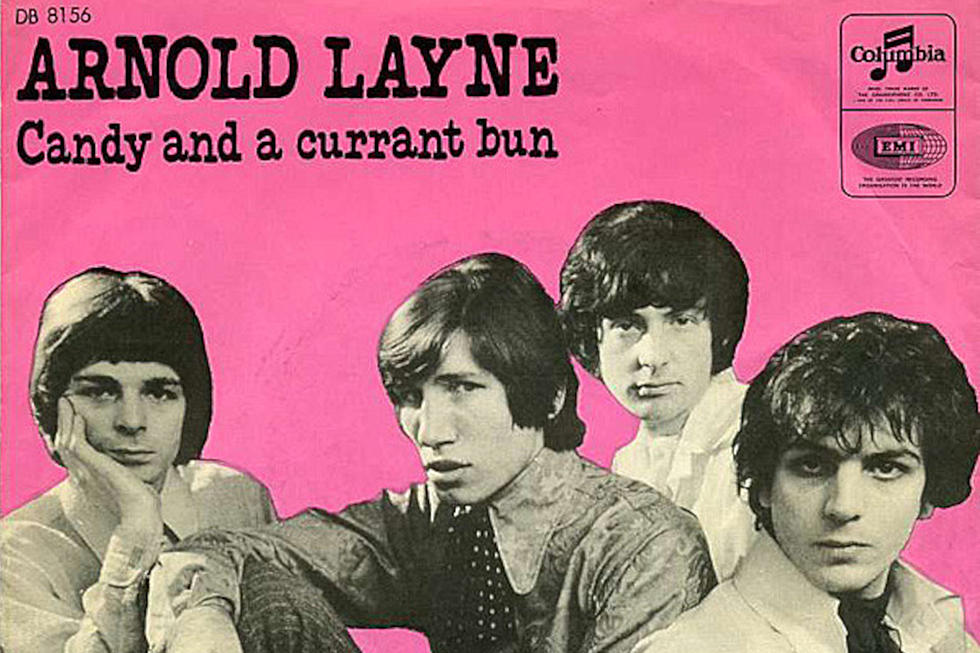
55 Years Ago: Pink Floyd Debut With Playful Single ‘Arnold Layne’
"'Arnold Layne' just happens to dig dressing up in women’s clothing," Syd Barrett told Melody Maker in 1967. "A lot of people do — so let’s face up to reality."
But Radio London didn’t feel like obliging. The "pirate" station reportedly banned Pink Floyd’s debut single, which documents the title character’s "strange hobby" of stealing women’s clothes from washing lines.
Given the subject matter, airplay suppression has more troubling implications for broader culture. (What part of the narrative was so offensive? Certainly not the vague references to petty theft.) Regardless, Barrett wasn’t concerned about how the controversy might affect their career: "If more people like them dislike us, more people like the underground lot are going to dig us," he said. "So we hope they’ll cancel each other out."
In that context, "Arnold Layne" was not only a brilliant first song but also a sound conceptual move, highlighting their distaste for the mundane.
Plus, Pink Floyd (billed early on as "the Pink Floyd") knew their target audience, having cemented themselves as a fixture of London’s burgeoning underground rock scene. The quartet — singer-guitarist Barrett, bassist Roger Waters, keyboardist Richard Wright, drummer Nick Mason — became renowned for the sprawling psychedelia of their live show, accentuated by trippy lights and projections that offered the feel of an avant-garde "happening."
Watch Pink Floyd's 'Arnold Layne' Video
By early 1967, that momentum led to a record deal with EMI and a recording session at Chelsea-area studio Sound Techniques, where they tracked a handful of tunes. Three of those, including the nine-minute proto-prog instrumental "Interstellar Overdrive," were released in August on the band’s first album, The Piper at the Gates of Dawn. But the snappy "Arnold Layne" — their easiest to scale back from a lengthier stage rendition, debuted in December 1966 — seemed like an obvious choice for a lead single.
"We knew we wanted to be [rock ’n’ roll] stars and we wanted to make singles," Mason once recalled, according to the 2017 book Pink Floyd: Song By Song. "So it seemed the most suitable song to condense into [three] minutes without losing too much."
They chose wisely. Released on March 10, 1967, "Arnold Layne" remains a masterpiece of the Syd Barrett era: With a slippery vocal melody, surprising chord changes and buzzing Farfisa organ solo, it's as playful and mysterious as anything from the group's first LP.
Pink Floyd's PR cleverly leaned into their growing hype: The single's sleeve teased, "THIS IS IT! … THE NEXT PROJECTED SOUND OF ’67," while promotional materials reportedly stated, "Pink Floyd do not know what people mean by psychedelic pop and are not trying to cause hallucinatory effects on their audience."
Watch Pink Floyd Perform 'Arnold Layne' in 2007
The single, backed with "Candy and a Currant Bun," hit No. 20 on the U.K. charts — a mark Pink Floyd would soon zoom past with that summer’s "See Emily Play." Still, "Arnold Layne" planted the seed for future chart domination, infiltrating the radio with experimental sounds and brazenly uncommercial subject matter.
Pink Floyd only played "Arnold Layne" in concert 20 times, likely because it’s so uniquely Barrett in character. Nineteen of those performances came during the singer’s tenure, before his exit from the lineup in 1968. The one exception: A 2007 Barrett tribute concert Madcap’s Last Laugh, marking Wright's final live Floyd performance with Mason and Barrett's successor David Gilmour.
As Layne himself might say, it suited them fine.
David Gilmour and Roger Waters Solo Albums Ranked
When Alice Cooper Got Stoned with Pink Floyd




